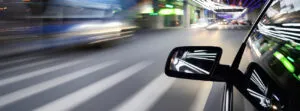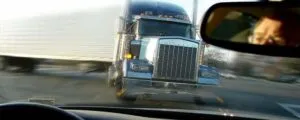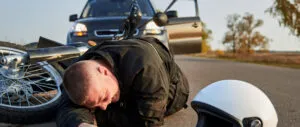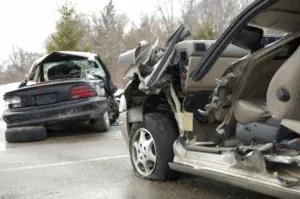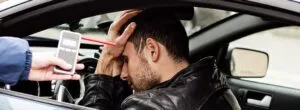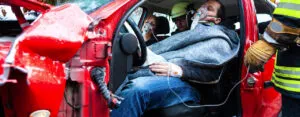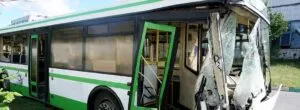Hit And Run Accident Attorney
Need a lawyer that will work tirelessly to win you the most money possible after a Hit-and-Run accident?
Many of us have experienced the hassle of being involved in a car accident and having to go through the sometimes months-long process of negotiating with insurance companies to settle a claim. At best, a car accident can be a headache. At worst, it can be a highly traumatic, life-altering, and very costly event. Regardless of the severity of the wreck, a car accident can go from being bad to worse if the other driver flees the scene. While you probably already feel startled and in shock about the accident, you are then left to figure out what to do next with the added confusion of the hit-and-run.
Being prepared with an idea of what actions you should take after a hit-and-run, and knowing what to expect, can go far in easing some of the stress and emotions you might feel following the accident. Here is some information on hit-and-run accidents and a guide on what to do if you find yourself the victim of a hit-and-run.
Call My Rights Law’s Hit And Run Accident Attorney If You Have Been Injured
The skilled car accident lawyers at My Rights Law are dedicated to helping clients get the best outcomes in their unfortunate situations. For your consultation, we will thoroughly evaluate your situation, including a review of the police report and your insurance coverage, and will advise you about possible legal solutions. Most cases are handled on a contingency fee basis which means that attorney’s fees are not charged to you without you obtaining a recovery in your matter. Don’t just hire any law firm to resolve your issue if you have been involved in a hit and run accident. Consult with My Rights Law hit and run accident lawyer by simply calling (888) 702-8845 or leaving a message on our secure web form and we’ll get right back to you.
- 1. Call My Rights Law’s Hit And Run Accident Attorney If You Have Been Injured
- 2. Hit And Run Accidents
- 3. What Are The Reasons For Hit And Runs?
- 4. Who Are The Most Likely Victims In Hit And Run Crashes?
- 5. What Should I Do After A Hit And Run Accident?
- 6. What If I Can’t Identify The Driver?
- 7. Options And Damages If The Hit And Run Driver Is Identified
- 8. Punitive Damages
Hit And Run Accidents
Hit-and-runs occur whenever a driver leaves the scene of a car accident without providing their information to another person involved in that crash. A driver who flees before the police arrive following a collision violates hit-and-run laws. Even in cases in which the driver strikes a parked car and leaves, the act is still a hit-and-run.
In the case of injury-causing crashes, drivers must provide reasonable assistance to ensure that others receive the medical treatment that they need. Satisfying this requirement might mean calling 911 to report the crash and to request an ambulance. If the person flees the scene immediately after the accident, they likely did not attempt to figure out whether anyone else needed medical attention. That driver may face legal consequences for committing a hit-and-run, even if they were not responsible for the collision.
Not only are hit-and-runs a crime, but they also create significant problems for other motorists who suffer injuries and property damage from the accidents. If you suffer injuries because of a hit-and-run, you might wonder about your options for seeking compensation. Your ability to recover damages can depend on many factors, including your insurance coverage.
What Are The Reasons For Hit And Runs?
Drivers flee the scene of a crash for many reasons. Sometimes, a driver may panic and leave the crash site without fully thinking about what they are doing. However, in other cases, drivers who flee the scene are those who believe they will face severe consequences if they remain and talk to the police. According to AAA, hit-and-run drivers are more likely to be drunk or under the influence of drugs than are other drivers involved in crashes.
Drivers who are drunk may understand that they are already violating the law and know that when the police arrive and learn that they were under the influence, they may face criminal charges. They may be motivated to flee the crash site to avoid a charge for driving under the influence of alcohol or drugs (DUI). Drunk or impaired drivers are also less inhibited, so they might try to evade law enforcement and fail to think about the additional ramifications of their actions.
Other reasons that a driver may leave the scene of the accident include: having an existing warrant out for their arrest, not having a valid driver’s license or car insurance, or otherwise fearing interactions with the police.
Who Are The Most Likely Victims In Hit And Run Crashes?
Hit-and-run crashes often involve a driver striking a parked car. Although these crashes are more common than those that injure individuals, many hit-and-run crashes may cause severe and even fatal injuries. The most likely victim to suffer serious injuries or death because of a hit-and-run driver is a pedestrian or cyclist, as they lack the protection that an enclosed vehicle provides. Often drivers may overlook these road users, making them more vulnerable to getting hit while riding on the roads or crossing the street.
Pedestrians and cyclists are also less likely than larger vehicles to damage a driver’s car from the impact of an accident. This may make them easier victims of hit-and-runs. Suppose a driver strikes a pedestrian or a cyclist. In that case, there could be minimal damage to the vehicle, making it possible for that driver to flee the crash scene because their vehicle remains drivable. Also, if there is little to no damage to the driver’s car, they may be less likely to be tracked down after the fact, as there may not be any indication that they were even involved in an accident. In contrast, a severe crash involving multiple vehicles is likely to damage all involved cars, making it more difficult for drivers to leave the scene. It is also more likely that police would be able to identify the damaged vehicle if they do attempt to flee.
What Should I Do After A Hit And Run Accident?
As with any car crash, the most important thing to do after a hit-and-run is to seek medical attention for yourself and for anyone else injured in the collision. You should then contact the police and report the accident.
If you can, you should try to write down as much information as you can about the driver and vehicle that fled the scene following the wreck. Perhaps you or any witnesses can remember some of the details. For instance, identifying the vehicle’s make, model, color, and license plate number, as well as any bumper stickers on the car or damage that it had from the accident, could help police to track down the driver who fled the scene. Any information you can gather regarding the driver’s appearance can also be helpful to law enforcement and investigators.
If anyone witnessed the crash, you may want to personally take down their information and statements and then ensure that the police officers speak with them as well. There may also be physical evidence at the scene of the crash. If you can do so safely, you may want to look around for any remnants from the hit-and-run driver’s vehicle and make sure that the officers are aware of paint scrapings or other pieces that you find. It also is a good idea to take pictures of the scene and of your vehicle.
Following a hit-and-run crash, you should also make an insurance claim. Alert your insurance provider of any injuries that you suffered and of any damage to your vehicle related to a hit-and-run crash. Providing your insurance company with the photographs you took and information that you documented about the other vehicle or driver may also be helpful to them.
You should keep careful notes regarding your medical care and repairs to your vehicle and save any receipts that you collect related to the accident. Also, you may want to follow up with the police so that you can be aware of the steps they are taking to track down the driver.
Sometimes, police may be able to identify the driver based on evidence that they collect, witness statements, security camera footage, and other information. In those cases, you can speak to an attorney about filing a personal injury claim against the driver who fled the scene. Unfortunately, in many cases, police may never identify a hit-and-run driver. However, even in those cases, you may still be able to pursue compensation, so you should speak with an attorney to discuss your options.
What If I Can’t Identify The Driver?
One of the first things to consider if the driver is never found is your insurance coverage. Some types of insurance may compensate you for your injuries and damages even if you cannot identify the person who caused the crash. If you carry uninsured or underinsured motorist coverage, you can make a claim with your insurance provider under that policy. Under those policies, your insurance company may treat the hit-and-run driver as if they were an uninsured motorist. If you find yourself in an accident with an uninsured motorist, you might face a difficult situation if you opted out of these forms of insurance. It is always a good idea to select an insurance provider and coverage that can protect you in case you suffer injuries caused by a driver who flees the scene or fails to carry car insurance.
If you do have to file a claim against your own insurance company, it may be a challenging process. Your insurer likely will not want to make a large payment and therefore may treat your claim similarly to how any defendant would treat a plaintiff’s claim for damages. An experienced lawyer may help you to negotiate a settlement or to pursue a claim against your insurance company if they refuse to offer reasonable compensation for your injuries.
Options And Damages If The Hit And Run Driver Is Identified
If the police identify the driver who caused your injuries, you can file a personal injury claim against that individual. The compensation that you can claim from the driver may depend on the severity of your injuries, as well as other factors such as your share of fault in causing the crash.
As with any personal injury case, you might be able to recover economic damages that compensate you for your actual losses, as well as non-economic damages, which compensate for losses that are not calculable.
Damages that might be available include compensation for your:
- Medical bills
- Hospitalizations
- Lost wages or earnings
- Future medical expenses
- Future lost earnings or lost earning capacity
- Pain and suffering
- Disfigurement
- Disabilities
- Diminished enjoyment of life
In cases in which the victim dies in a crash, family members may be able to recover funeral or burial costs and other damages by filing a wrongful death claim. The amount of damages that a person can collect will vary significantly based on the specific facts of the case.
If you share liability for the incident that caused their injuries, you might face a reduction in your damages, or your claim may be barred. In some states, if you suffer injuries in a crash that is partly your fault, you may still be able to recover damages. In that case, if you and the other driver both contributed to causing the accident, the court may determine how much each driver was to blame for causing the accident and assign each of you a percentage of fault. The court may then reduce your damages award by the percentage equal to your share of fault. For instance, if your damages amount to a total of $100,000, and you are 20 percent at fault for the crash, the court may lower your damages by 20 percent, making your total award $80,000. In some states, even if you are 99 percent at fault for an incident, you may still be able to recover one percent of your damages to account for the other driver’s one percent of the fault.
Punitive Damages
Punitive damages are a particular type of award that a court may apply in a case in which it decides that the person should be punished for some significant wrongdoing that contributed to the accident. For instance, if the driver who caused your injuries was drunk at the time of the crash, the court might award punitive damages as a way of reprimanding that individual for their particularly wrongful conduct. Judges can only award these damages in situations where the defendant’s behavior is especially egregious.
In the case of a hit-and-run crash, a court might find that the defendant’s behavior meets this standard. Hit-and-run drivers often leave their victims on the road without checking to see whether they need medical attention or other assistance following the accident. Also, fleeing the scene of an accident is illegal. Judges do not look favorably upon these actions and may decide that the behavior is bad enough to warrant an additional penalty against the defendant in the form of punitive damages.






